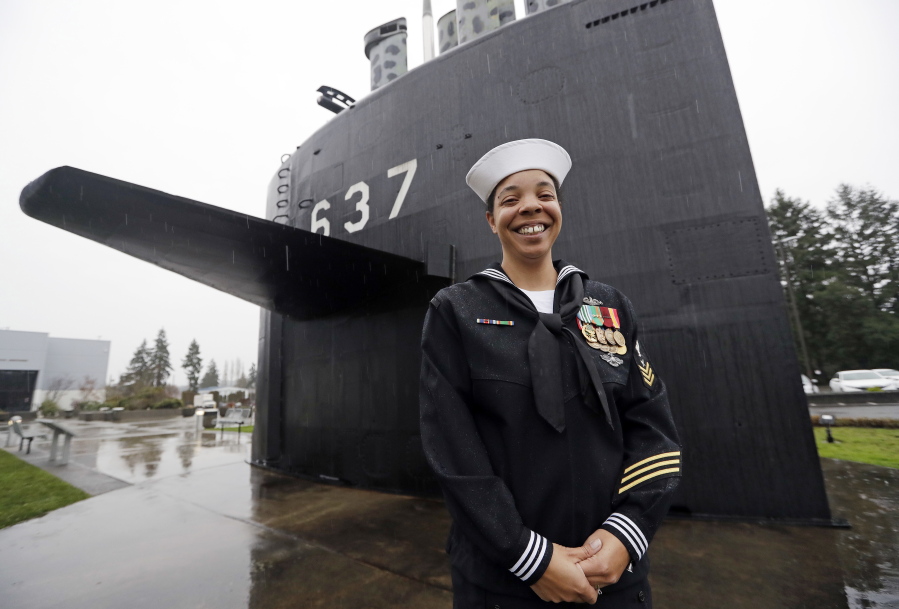PROVIDENCE, R.I. — When the U.S. Navy sought the first female sailors to serve on submarines, Suraya Mattocks raised her hand because she thought it would be a cool job, not because she wanted to blaze a trail. She did anyway.
It has been eight years since the Navy lifted its ban on women in submarines. The chaos and disruption some predicted largely haven’t materialized. Women like Mattocks are focused on doing their jobs well. Their retention rates are on par with those of men — much higher than the Navy had anticipated, according to records obtained by The Associated Press.
And they want to be seen simply as “submariners,” not “female submariners.”
“That’ll be a great day when it’s not so new that everyone wants to talk about it,” Mattocks told the AP in a rare interview. “Females on my crew, they really and truly just want to be seen as submariners. That’s it.”
The Navy began bringing female officers on board submarines in 2010; enlisted female sailors followed five years later.
By now, the first 19 female officers have decided whether to sign a contract to go back to sea as a department head, which keeps them on the career path for a submarine officer, or have chosen a different path. Five women signed. Fourteen women have either left the military, will soon leave or are serving elsewhere in the Navy, according to records requested by the AP.
That’s a retention rate of 26 percent for the first female officers, just shy of the roughly 27 percent of male officers selected for submarine service in 2010 who signed a department head contract. The Navy had been looking for at least 15 percent for women.
Nine more female officers were picked for submarine service in 2010, but with the intention they would return to jobs in the supply departments on surface ships or ashore — a normal career path.
“You always want higher” numbers, said Adm. John Richardson, the chief of naval operations, but he is encouraged by the initial results and the growing number of female officer candidates who want to be submariners.
“I think if there was a sense it was not doing well, we wouldn’t have those types of numbers,” he said.
Richardson led the submarine force at the beginning of the integration, from late 2010 to 2012. At that time, some submarine veterans, wives of submariners and active-duty members were calling the change a mistake. The living quarters were too tight, there was little privacy and romantic relationships could develop, they feared.
Many now say that the transition went smoothly, with one major exception. Male sailors were prosecuted in 2015 for secretly videotaping female officers and trainees as they undressed on the USS Wyoming.
“They did court-martial the perpetrators. It wasn’t laughed off, and that’s a good thing,” said retired Navy Capt. Lory Manning, director of government relations for the Service Women’s Action Network. “I don’t think, in general, it dampens the effort.”
To address privacy, the Navy is retrofitting subs with extra doors and designated washrooms.
Some accustomed to sleeping in their underwear now don a robe or sweats to go to the bathroom, for instance, in case they encounter another gender in the hall.
“That goes for both sides. It’s not that all females have to wear this and males can do whatever they want,” Mattocks said.



